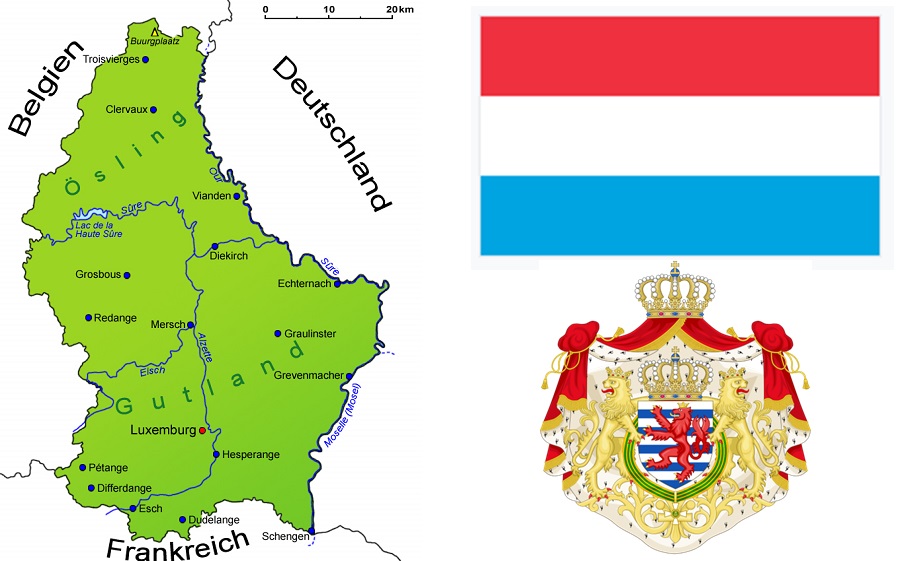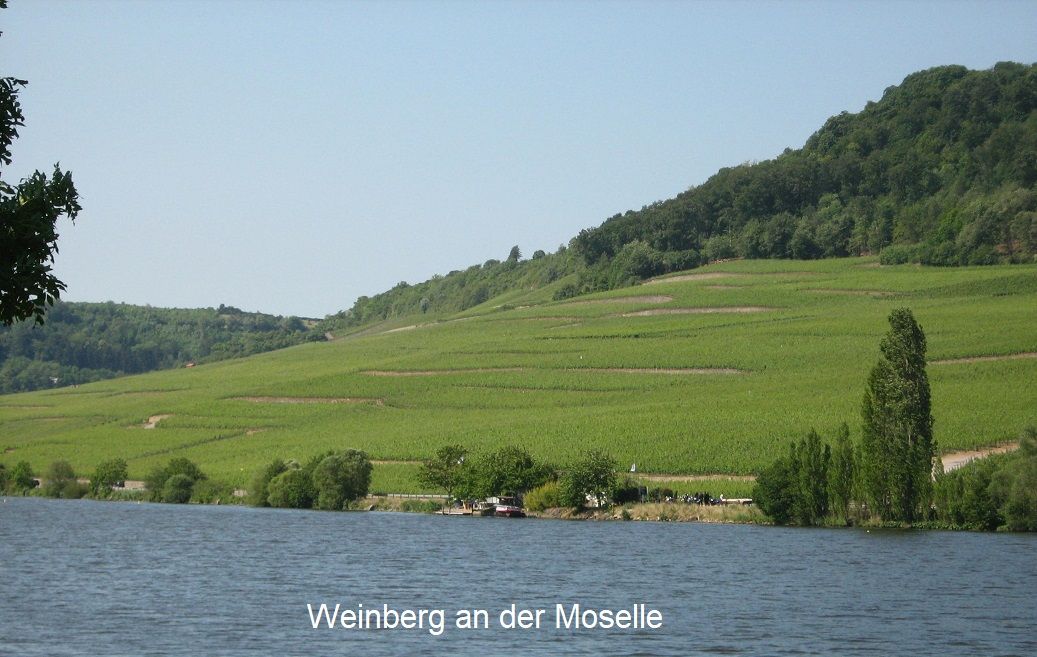Results
2,284 Results
Loading more Results ...
Loading more Results ...
Wine regions in Luxembourg 2 growing regions
Description to Luxembourg
The Grand Duchy of Luxembourg (Groussherzogtum Lëtzebuerg in Luxembourgish) in the west of Central Europe with the capital Luxembourg covers 2,587 km². It borders France to the south, Belgium to the west and Germany to the east. Together with neighbouring Belgium and the Netherlands, it forms the Benelux countries.

History
The wine-growing history of this country is linked to that of the Moselle; this river forms the border with Germany over a length of 36 kilometres. To the east, on the other bank, lies the German Moselle wine-growing region. The Romans introduced viticulture to the entire region as early as the 1st century BC. In the Middle Ages, many monasteries were founded, leading to an upswing. An extremely cold winter in 1709 almost completely destroyed the vineyards. Following a decision at the Congress of Vienna in 1815, the Grand Duchy of Luxembourg had to cede all the vineyards on the other side of the river. From 1880, there was a great upswing due to a customs agreement. Luxembourg wines were exported to Germany as a base wine for sparkling wine or as a blended wine. However, this came to an end after the First World War.

Viticulture
Climatically, the wine-growing regions are located on the northern edge of European viticulture. The vineyards are divided into around one hundred vineyards with a width of 300 to 400 metres over 40 kilometres along the banks of the Moselle from Schengen to Wasserbillig. They are located in the eastern cantons of Remich (with the main communes of Remich, Schengen and Wintrange) on alluvial soils and Grevenmacher, where limestone soils predominate. The limestone soils are particularly suitable for Pinot varieties. The cold temperatures result in longer ripening times and strongly fluctuating yields. The high yield limits are 140 hl/ha for Rivaner and Elbling, and 120 hl/ha for the other varieties. The acidic Elbling is mainly processed into Crémants.
There is the comprehensive appellation designation "Moselle Luxembourgeoise" and "Crémant de Luxembourg" for sparkling wines produced according to the Champagne method. The "Marque Nationale des Vins Luxembourgeois" was introduced in 1935. The "Marque Nationale - Appellation Contrôlée" label guarantees the state control of origin and quality on the basis of an analytical and sensory test according to a 20-point system with at least 12 points. With 14 points, a wine reaches the category "Vin classé", with 16 points "Premier Cru" and with 18 points "Grand Premier Cru". The criteria introduced in 2001 for "Vendange Tardive"(late harvest), "Vin de Glace"(ice wine) and "Vin de Paille"(straw wine) are based on Oechsle degrees. The "Vins Barrique" are mostly wines made from Chardonnay. Mainly single-varietal white wines are produced, the grape variety is noted on the label alongside the municipality and often also the location.
Vineyards
In 2022, the vineyards covered 1,295 hectares of vines, from which 82,000 hectolitres of wine were produced. The grape variety index (Kym Anderson statistics):
Grape variety |
Colour |
Synonyms or name in Luxembourg |
hectares |
| Müller-Thurgau | white | Rivaner | 316 |
| Pinot Gris | white | - | 196 |
| Auxerrois | white | - | 190 |
| Riesling | white | - | 162 |
| Pinot Blanc | white | - | 160 |
| Pinot Noir | red | - | 121 |
| Elbling | white | Räifrench | 86 |
| Chardonnay | white | - | 30 |
| Gewürztraminer / Traminer | white | - | 21 |
| St Laurent | red | - | 4 |
| Muscat Blanc | white | - | 1 |
| Dakapo | red | ? | |
| Gamay | red | ? | |
| Muscat Ottonel | ? white | ? | |
| Silvaner | white | ? | |
| remaining red varieties | red | - | 1 |
| remaining white varieties | white | - | 12 |
Producers
In just 20 years, the number of producers has fallen from 1,200 to less than 500, as many small estates have sold their land. "Les Domaines de Vinsmoselle" is an association of six winegrowers' co-operatives with 450 grape suppliers. The "Organisation Professionnelle des Vignerons Indépendants (OPVI)" was founded in 1966 with around 50 independent winegrowers. In the 2007 vintage, seven winegrowers from this group founded the "Charta". They are committed to natural wine production with strict rules such as no enrichment and no organic fertilisation, as well as a maximum yield restriction of 60 hl/ha. This is around half of the legal requirements in Luxembourg.
Wineries and merchants are organised in the "Fédération des Producteurs Négociants". The best-known producers in Luxembourg include Mathis Bastian, Claude Bentz, René Bentz, Bernard-Massard, Caves Gales, Alice Hartmann, Jean Ley-Schartz, Caves St-Remy-Desom, Clos des Rochers, Clos Mon Vieux Moulin, Château de Schengen, Aly Duhr et Fils, Pundel-Hoffeld, Pundel-Sibenaler, Henri Ruppert, Krier Frères, Paul Legill, Jean Schlink-Hoffeld, Schmit-Fohl, Schram & Fils, Schumacher-Knepper, Schumacher - Lethal & Fils, Steinmetz-Jungers, Stronck-Pinnel, Sunnen-Hoffmann and Thill.
Map: © Goruma
Vineyards: By Ipigott - Own work, CC0, Link
Source 1st paragraph: WIKIPEDIA Luxembourg
Recent wines 168
 Domaine Henri Ruppert
— Moselle Valley
2014 Moselle Luxembourgeoise AOP Crémant de Luxembourg Esprit de Schengen
12.00 €
Domaine Henri Ruppert
— Moselle Valley
2014 Moselle Luxembourgeoise AOP Crémant de Luxembourg Esprit de Schengen
12.00 €

 Domaine Henri Ruppert
— Moselle Valley
2012 Moselle Luxembourgeoise AOP Crémant de Luxembourg Brut Cuvée Gëlle Fra
36.60 €
Domaine Henri Ruppert
— Moselle Valley
2012 Moselle Luxembourgeoise AOP Crémant de Luxembourg Brut Cuvée Gëlle Fra
36.60 €
